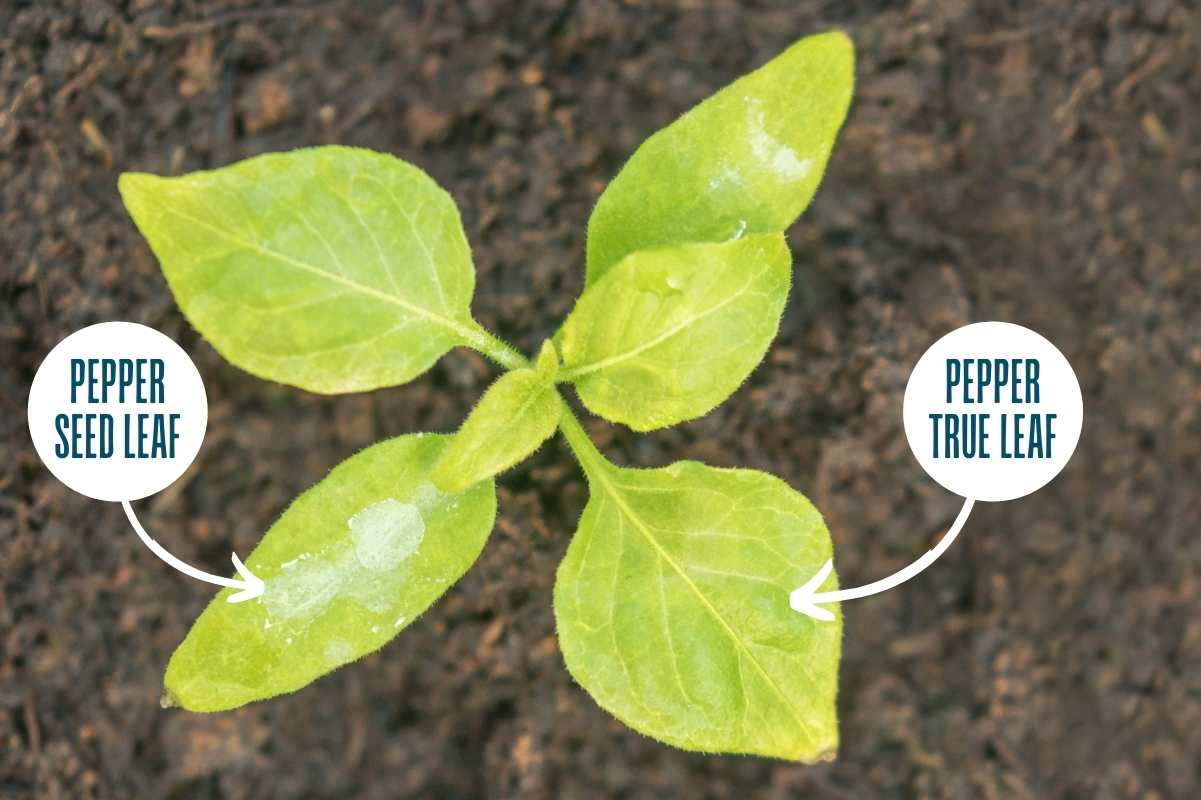When starting plants from seed, it’s important to understand the difference between seed leaves and true leaves Seed leaves, also called cotyledons, are the first leaves to emerge from a germinating seed True leaves develop a bit later and signify that the seedling is established and ready for the next stage of growth. This article explains what true leaves are, how to identify them, and why they are an important milestone in seedling development.
What Are True Leaves?
True leaves are the second set of leaves to form on a seedling, after the cotyledons (seed leaves). They emerge from the growth tip (apical meristem) after the seedling is established.
True leaves come after seed leaves. Whereas there will only be one set of seed leaves throughout the plant’s life, new true leaves will grow for as long as the plant is growing. The first few sets of true leaves will be the same shape as the adult foliage, just baby-sized.
Unlike cotyledons, true leaves are produced by the young plant itself through photosynthesis. They take on the form and function that subsequent leaves on the maturing plant will have. This allows the seedling to transition from dependence on food stored in the seed to making its own food via photosynthesis in the true leaves.
Identifying True Leaves
True leaves can be distinguished from cotyledons by their appearance and order of emergence:
- Cotyledons emerge first right after seed germination. They often look simple, rounded, or generic.
- True leaves emerge next from the apical meristem after the cotyledons are established. They take on the characteristic shape and features of that plant’s foliage.
- Additional sets of true leaves continue forming as the seedling matures
For example, tomato seedlings first put out oval cotyledons. The next leaves to emerge are divided into leaflets, resembling miniature versions of the leaves on a mature tomato plant. These are the first true leaves.
Many common vegetables and herbs display noticeably different cotyledons versus true leaves like this. Comparing seedling leaves to mature plant foliage makes it easier to distinguish between the two.
Why Are True Leaves Important?
The emergence of true leaves is an important developmental milestone for seedlings. Here’s why they matter:
- Marks the transition to independence. With true leaves, the seedling can begin photosynthesis and produce its own food rather than depending on the seed.
- Indicates the seedling is established. True leaves signal that the roots are developed enough to support leaf growth and the seedling is ready for transplanting or thinning.
- Shows the plant is strong enough for fertilizer. Once true leaves appear, the seedling needs nutrients. This is when liquid fertilizer can be applied.
- Allows identification of the plant. The true leaf shape reveals what species or variety the seedling is. Their appearance verifies seeds sprouted correctly.
- Provides early pest/disease diagnosis. Issues like nutrient deficiencies, fungi, and pests can be caught early by inspecting true leaves.
Noticing the emergence of true leaves is a cue for the gardener to take action. This includes thinning, transplanting, fertilizing, and pest monitoring. Care at this stage helps ensure healthy, thriving plants.
Common Questions About True Leaves
Here are answers to some frequently asked questions about true leaves:
How many sets of true leaves will a plant produce?
Plants will continue generating true leaves as long as conditions enable growth. A tomato seedling may produce 5-7 sets before being transplanted. True leaf production depends on species, cultivar, and growth rate.
How soon after cotyledons do true leaves appear?
The timing varies by plant. Fast-growing species like lettuce may form true leaves within days of germination. Slower vegetables like parsley can take several weeks after cotyledons emerge. Check seed packets for estimates.
Can true leaves replace cotyledons if damaged?
No, cotyledons and true leaves develop from different plant tissues. While true leaves can compensate for cotyledon loss, the converse is not true. Protect cotyledons to ensure healthy seedling establishment.
Is fertilizer needed for true leaf growth?
Yes, true leaf development creates a need for supplemental nutrients. Apply soluble fertilizer formulated for seedlings at 50% strength once the first set of true leaves appears.
Can true leaves be used to thin seedlings?
Yes! Select the strongest seedling and use sharp scissors to snip off the others at soil level. You can enjoy the tender thinnings in salads. Just leave the strongest seedling undisturbed.
The journey from seed to seedling is an exciting process for gardeners. Keep an eye out for those important true leaves to start your plants off right! Proper identification and care of true leaves leads to thriving vegetable, herb and flower seedlings.
True Leaves vs Seed Leaves | How to Tell The Difference
- The Ultimate Guide to Growing Strawberries in Raised Beds - August 8, 2025
- No-Dig Garden Beds: The Easiest Way to Grow a Beautiful Garden - August 6, 2025
- How to Protect and Preserve Wood for Raised Garden Beds - August 6, 2025

